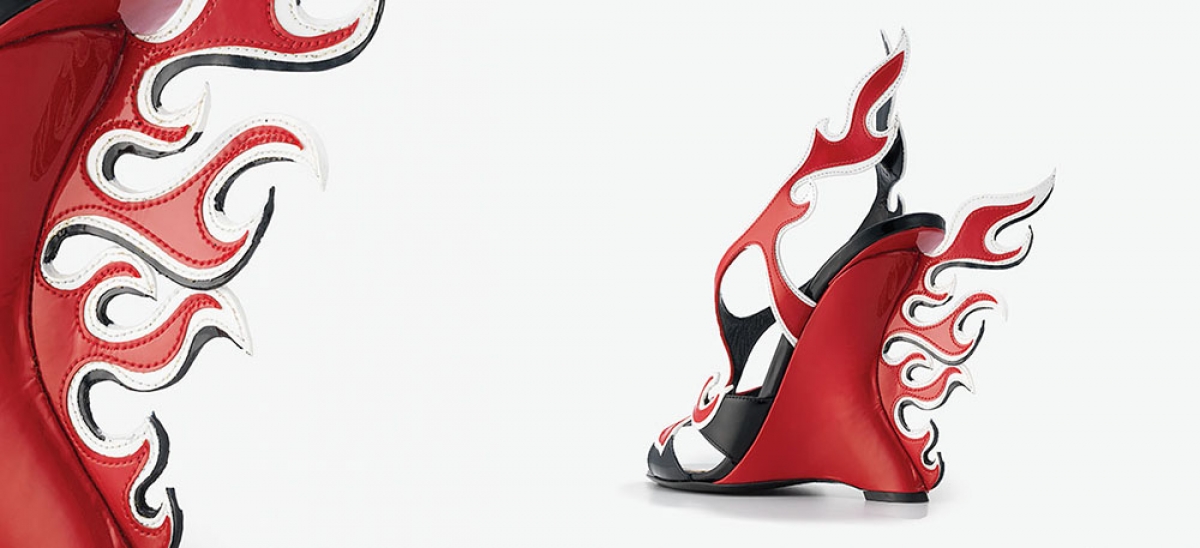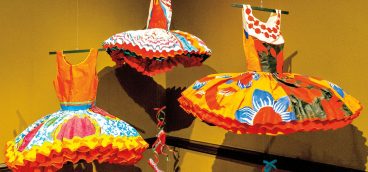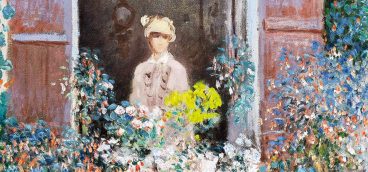
Unbalanced. Uncomfortable. Unnecessary. For a somewhat misinformed 30-year-old male, these descriptors came to mind when considering the high-heeled shoe. So when I sat down to write about a wildly popular exhibition coming to Pittsburgh this summer featuring these shoes in their historical context, you might understand my uncertainty. After all, my own “heel” collection is quite limited: I own a pair of cowboy boots without having seen a real cowboy, a pair of construction boots without setting foot on a construction site, and a pair of hiking boots that only rack up mileage on a sidewalk shoveling snow.
So can you reasonably “put yourself in someone else’s shoes” without ever owning a pair yourself? As it turns out: absolutely.
Stylish. Seductive. Empowering. Formulating an opinion of these shoes without considering the concept of artistic expression is to completely neglect what it means to be uniquely “you.” They’re much more than just shoes—they’re the output of limitless imagination and meticulous craftsmanship from a palette of dynamic colors, forged from materials both durable and delicate.
The history of the high heel is vast, thoroughly entertaining, and to a degree, enlightening. Playing roles both functional and flamboyant throughout the centuries, the obvious aesthetic characteristics “extend” far beyond the shoe itself. Dating back to ancient Egypt, they were worn by the upper class to distinguish themselves from the literally lower class. In addition to the height improvement while wearing heels, women also could achieve a more slender-looking leg coupled with a seductive gait. Though the heel had almost vanished by the beginning of the 19th century, it returned in full force leading into the 20th. Stronger materials allowed designers to raise the heel higher and higher, helping catapult actresses such as Marilyn Monroe into super-stardom.
Each item speaks a different language, commands a unique appreciation, and defies the ordinary.
Observing a high-heeled shoe and mentally gauging its discomfort level now seems a tad hypocritical. After all, it’s not as if tightly knotting a tie around my neck could ever be considered practical. With each shoe comes a fantastic story and, wouldn’t you know it, men played a significant part in the rise of what is now today a staple of the fashion industry. Height-challenged kings and wealthy aristocrats sported heels for the extra inch or two, while horsemen used them to gain additional leverage in the stirrup.
These stories in all of their astonishment, elegance, and occasional horror (see: Chinese foot binding) will be displayed June 11 through September 14, when The Frick Pittsburgh presents a tremendously successful exhibition on the evolution of one of fashion’s most tantalizing accessories. From classical, modest platforms to the modern, more provocative stiletto, “Killer Heels: The Art of the High-Heeled Shoe” is the all-encompassing experience for footwear aficionados, with an exquisite collection comprising nearly 150 styles and eras.
Curated by the Brooklyn Museum’s Lisa Small, “Killer Heels” draws from three principal sources: Toronto’s Bata Shoe Museum, New York’s Metropolitan Museum of Art, and crème de la crème designers, including Christian Dior, Prada, Roger Vivier, Chanel and Christian Louboutin.
Organized in six distinct categories, the assortment of creative architecture in “Killer Heels” is nothing short of extraordinary. A wedge with cherry red flames firing out the back and up the sides of the shoe with black leather accents leaves you wondering if the devil might actually wear Prada. A slipper embroidered with silk butterflies fixed atop a high-centered platform trimmed with smooth, tan satin gives you a first-hand look into 19th century Chinese footwear. Italian platforms from the 16th century (called chopines) constructed from wood and cork are elegantly decorated with moss green silk and small metal studs. The powerful stance of a pair of Christian Louboutin stilettos is both intimidating and irresistibly attractive, as your eyes wander up a towering thin metal spike to its brilliant red soles complemented by flawless black leather. Each item speaks a different language, commands a unique appreciation, and defies the ordinary.
Pittsburgh will be…the last opportunity to see all of these amazing works in one place before they disperse.
In just his second year at The Frick, director Robin Nicholson has taken on the opportunity and challenge of applying a modern touch to an institution known more for itsconservative displays. The museum has typically showcased more traditional exhibitions since its 1970 opening. Nestled away off of Penn Avenue in Point Breeze, visitors have enjoyed European paintings, decorative arts, breathtaking photography, an extensive Car & Carriage collection, and Clayton, the former home of Pittsburgh “Coke King” Henry Clay Frick.
Fashion has become an increasingly popular trend in the museum realm; Nicholson recalls patrons waiting in line up to five hours in 2011 to get into British designer Alexander McQueen’s “Savage Beauty” exhibition, hosted at the Metropolitan Museum of Art. When the dust settled, more than 650,000 people attended, accompanied by a sharp uptick in coveted membership purchases.
But something else caught Nicholson’s eye. “What was extremely fascinating to me when I was walking around the exhibition was the average age of the visitor, about 24 or so… a kind of demographic museums would kill for because they just aren’t the classic museum crowd.”
The Frick’s deployment of “Killer Heels” represents a major strategic shift to attract a broader demographic. And while Nicholson certainly views it as an opportunity for growth, it’s also a chance to simultaneously reshape the brand and tap into a unique niche.
“Every art museum in America is asking the same question: How do we bring millennials through the door?” To add a bit of exclusivity, Pittsburgh will be the historic tour’s last stop. “This is the most exciting exhibition of its kind ever to take place. It’s the last opportunity to see all of these amazing works in one place before they disperse.”
With an event of this magnitude coupled with The Frick’s monumental preparation efforts, Nicholson has laid the foundation for a thoroughly entertaining, uncommon museum experience. “We want to promote this as a place people can come and just enjoy. We’ll be open every Friday all year round with evening programs, pop-up bars and entertainment.” Open until 9 p.m.on Fridays with a newly constructed network of walking paths around the estate, The Frick is quietly becoming anything but conventional. And the next exhibition? “Undressed: 350 Years of Underwear in Fashion.”





